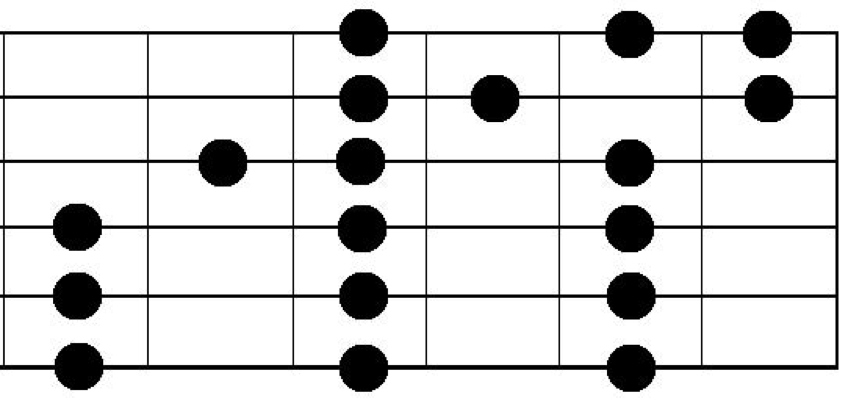Learn Advanced Blues Guitar Scales To Make Your Guitar Solos Sound More Advanced
When improvising a blues solo, most intermediate guitarists will only play one scale all the time. Fact is that there are many options that can be explored. Off course if we only play one scale all the time, it will soon start to sound boring, that’s why we’ll look into different advanced scales we can use to improvise guitar solos.
-The Difference Between Dominant And Minor Blues
Before we can start exploring these different scales, we’ll need to address the two general types of blues chord progressions. In general we can divide all blues songs in two categories; either blues songs are written as a minor blues or as a dominant blues. The dominant blues is the most common way of playing the blues. If we use ‘the key of A’ we would play a twelve-bar dominant blues by using the chords A7, D7 and E7. We’re using the term ‘dominant blues’ because the chords in the progression are all dominant seventh chords (such as the A7 chord).
In a minor blues we’re using minor seventh chords instead of dominant seventh chords, so a minor blues in A would contain the chords Am7, Dm7 and Em7 (if this minor blues would follow the twelve-bar structure).
-Which Scales To Use?
Let’s start out talking about the scales that you can use over a minor blues first, since these options are much smaller then the options we can use over a dominant blues.
Scales You Can Play Over a Minor Blues:
- Minor Pentatonic Scale
- Blues Scale
- Minor Scale
Sometimes a minor blues will feature elements from the dominant blues, the most common way is to change the Em7 chord (which is the fifth chord above the root note of the scale, which we call the ‘five chord’ if we are still using the A minor key as an example) to an E7 chord. More advanced scales you can play over a minor blues that features a dominant five chord are:
- Minor Harmonic Mode
- Minor Melodic Mode
These last two modes can only be used in some places and require a different approach to improvise a guitar solo than most other scales.
Scales You Can Play Over a Dominant Blues:
- Minor pentatonic (use with care)
- Blues scale
- Major pentatonic
- Dominant pentatonic
- Mixolydian mode
- Minor scale (use with care)
- Minor harmonic mode (use with care)
- Melodic minor mode (use with care)
- Diminished scale
These are the most commonly used scales and there are many other advanced scale options that can be explored. Some scales should be approach with care, such as the minor pentatonic, the minor scale and the minor harmonic and minor melodic modes. I won’t expand into the reasons that are causing this, since there’s simply no room for this in this article. If you play guitar solos using these last two advanced scales you will probably notice that these scales are harder to use then the others.
By altering between those different scale options, we’re able to add exotic sounds, incorporate jazz sounds, or give our playing a country touch, etc. Experienced guitarists are able to shift between these scales to add the sound that’s in their head to their solos.
Gravitating From Blues to Jazz
Since there are so many scales we can use, it would be overwhelming if we looked at all the options at once. That’s why we’ll start out by looking at one option; the mixolydian mode. This mode will produce a jazzier sound if we play a solo over a dominant blues.

A mixolydian mode
You will notice that this approach produces a jazzy sound and that it’s much easier to use this scale over the A7 chord then over the other two chords in a twelve bar. That’s why it’s important to not only learn which scales we can use, but also look at how we can use them and the reasons why they work in a given situation.
Want To Master Blues Guitar Playing But Don't Know Where To Start? Check Out My Online Blues Guitar Lessons
